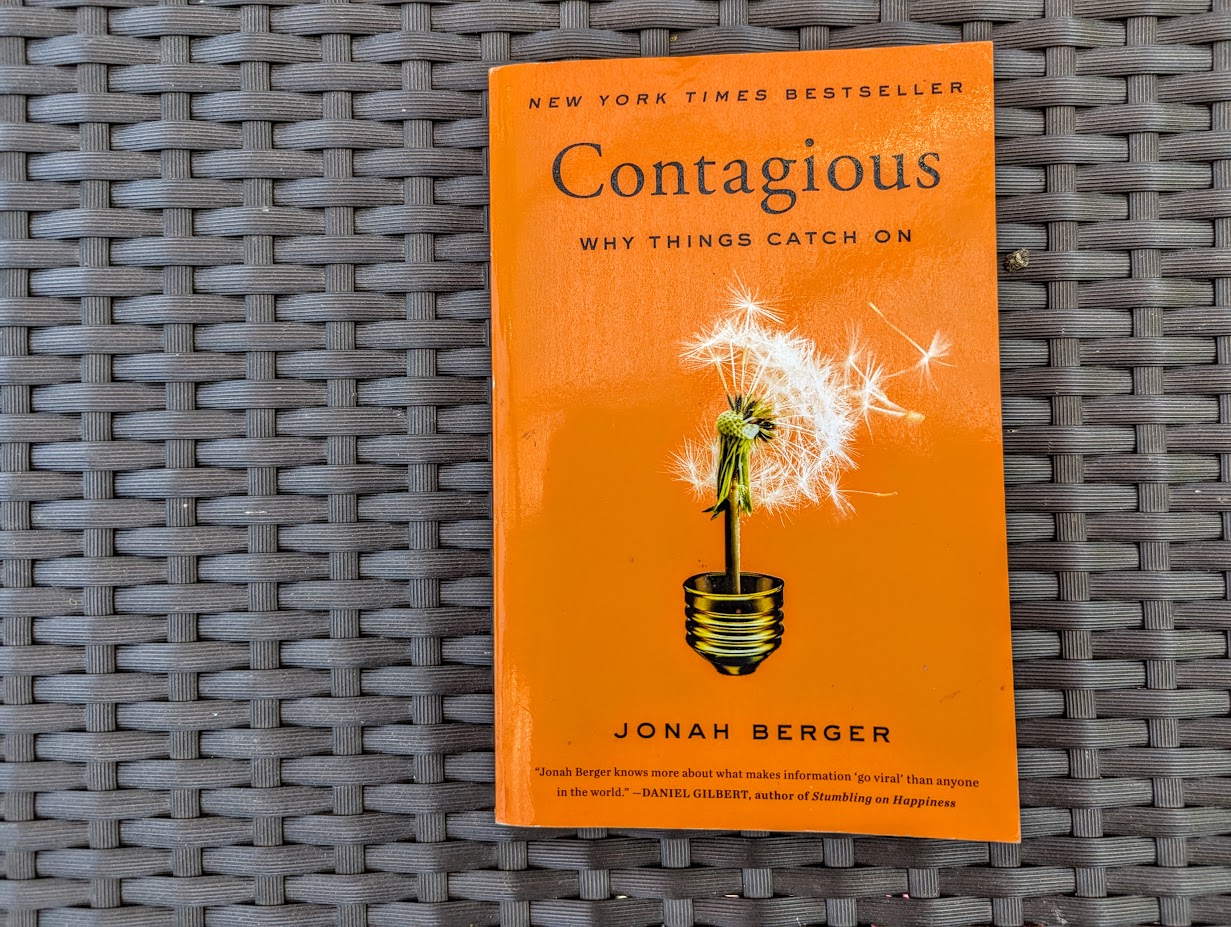By Jonah Berger – Buy It
I’ve gone viral online before, and I have a pretty trendy business. Let’s see what Berger says about that pathway to success.
- Social transmission is key: 20-50% factor in deciding to make a purchase
- Only 7 percent of transmission happens online
- Must look for the most interesting thing about the thing and then share it so people share and talk about it
- Exercise makes people more likely to share – run campaigns right after an experience (vs laying there calm and unmotivated)
- Money doesn’t motivate – people do things because it makes them feel good
Six principles of contagious
- Social currency: leverage game mechanics to give people ways to achieve and provide visual symbols of status. People like looking smart, rich, and cool. Think about facts on Snapple caps – you share them, and where did you hear about it?
- Look for remarkability: it’s interesting, surprising, or novel.
- Game it: give people something to level up with.
- Make people feel like insiders.
- Secrecy: don’t tell anyone – well, maybe one . . .
- Triggers: stimuli that prompt people to think about related things. Design products and ideas that are triggered by the environment.
- Remember that buzz is immediate and long term, play both
- Emotion: Pick the right emotions and kindle the fire. Negative can even work.
- Awe
- Anger
- Anxiety
- Humor
- Public: the more public a thing, the more other people also want to do it
- Look for a place full of people
- Make things observable – like No Shave November
- Practical value: is it useful? So useful that others will share?
- People share so they can help others
- Make deals that can help others get in on a product someone loves
- Add more value for a limited time or if there’s a limited amount
- Remember that % is good when something is less expensive and $$ is good when something is more expensive
- Things marked as “sale” will sell more, even if they’re not discounted
- Stories: make the message so integrated that people can’t tell the story without your product
- Show the reality of something to gain loyalty and limit fear of something
- Tell stories about how people started and how they ended

